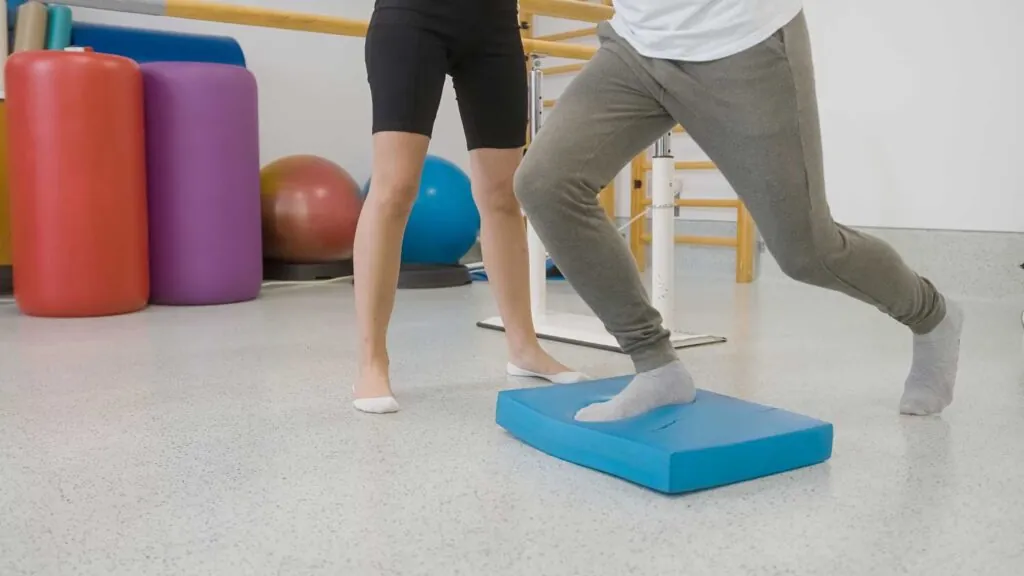When suffering from an injury, recovering from a surgery, managing a chronic illness, or simply wanting to regain the strength and independence you once had, many turn to either Physical or Occupational Therapy. In fact it is reported that about 50 million individuals receive Physical Therapy and 10 million individuals receive Occupational Therapy annually. Physical therapy (PT) and Occupational Therapy (OT) are two of the most prominent types of therapy to achieve these goals and understanding the difference between the two can help individuals make informed decisions about which modality will best address their needs. In this post we will discuss the difference between the two therapies, the education required to achieve a PT or OT degree, and the areas of specialty found within each therapy.
Understanding the Two Therapies

To better understand the two disciplines we must first understand the foundation of each. So, what is physical therapy? Physical therapy is a rehabilitative discipline that focuses on improving one’s movement by addressing mobility and strength all while reducing pain. PT is most commonly used for sports related injuries, post surgical recovery, stroke rehabilitation, and chronic pain. Now, what is occupational therapy? Occupational Therapy is a rehabilitative discipline that centers its focus of care on assisting a person in regaining their ability to perform activities of daily living (ADLs) such as cooking, bathing, or dressing. PT and OT both help an individual to return to their prior level of function (PLOF); however, each discipline addresses different components of the recovery process and the two often collaborate to provide an interdisciplinary treatment approach.
Education
Both PT and OT require advanced education however, the path one takes to achieve their respective degree differs. OTs must first obtain a bachelor’s degree, typically in a related field. This is then followed by a Masters of Occupational Therapy which generally takes about two years to complete. Unlike OTs, PTs must obtain a Doctorate of Physical Therapy following their bachelors degree which takes approximately 3 years to complete. Both academic experiences include extensive hands-on training in various clinical settings. To culminate the academic experience and to begin treating patients independently, an OT must pass the National Board for Certification in Occupational Therapy (NBCOT) exam and a PT must pass the National Physical Therapy Examination (NPTE).
Differences

The differences between OT and PT go beyond their academic differences. The primary difference is what each discipline is centered around. PT is centered around improving the patient’s ability to move while managing their pain. Whereas, OTs primary focus is on helping an individual regain their ability to perform ADLs independently. For example, when recovering from a Total Hip Replacement (THR) a PT would assist in improving the strength and mobility of the hip and an OT would assist in transfer training in and out of the shower as well as dressing training. In a broader sense, PT focuses on targeting larger muscle groups whereas OT focus more on fine motor skills such as gripping a zipper or brushing hair.
Similarities
Despite their differences, PT and OT have some similarities. Both PT and OT share a common goal of improving an individuals quality of life whether they are recovering from an injury/surgery, battling a chronic illness, or wanting to improve their functional mobility. By providing a patient-centered approach when developing a treatment plan both OTs and PTs work to create a treatment plan that is unique to the individual’s current functional status and goals. Both PTs and OTs utilize therapeutic exercise and therapeutic activities as well as manual modalities within their treatment plans to assist the patient in achieving their goals. PTs and OTs often work in clinical settings including hospitals, outpatient clinics, and schools which allow them to provide a multi-disciplinary treatment program. Additionally, each supports individuals with a wide range of conditions including neurological disorders, chronic illness, age related impairments, and orthopedic injuries. PT and OT not only focus on recovery, they also help to prevent further injury or decline that is seen in an aging individual. This includes but, is not limited to balance, pain, or loss of function.
Specialties
The world of rehabilitation continues to grow and the specialties that fall under the umbrella of each discipline have expanded exponentially since each has been established allowing PTs and OTs to treat a broad range of functional impairments. PT specialties include but are not limited to Certified Wound Specialist (CWS), Cardiovascular and Pulmonary Certified Specialist (CCS), Geriatirc Certified Specialist (GCS), Neurologic Certified Specialist (NCS), Orthopedic Certified Specialist (OCS), and Women’s Health Certified Specialist (WCS.) OT specialties include but are not limited to Physical Rehabilitation (BCPR), Driving and Community Mobility (SCDCM or SCDCM-A), Environmental Modification (SCEM or SCEM-A), Feeding, Eating, and Swallowing (SCFES or SCFES-A), and Mental Health (BCMH).
Do I need an Occupational Therapist or a Physical Therapist
When determining whether you need a PT or an OT during your recovery process it is important to first consider what your specific goals are. If you are looking to improve your strength and mobility, PT will likely be the discipline to help you most efficiently achieve that goal. However, if you notice that you have begun to have difficulty accomplishing ADLs such as getting dressed, cleaning the house, gardening, or cooking then OT is likely the best option.

Neck pain can significantly impact your daily life, limiting mobility, comfort, and overall well-being. Through targeted therapeutic exercises, hands-on techniques, and personalized strategies, we focus on helping you reduce pain, restore function, and return to your prior level of activity. Our comprehensive approach addresses your unique needs and goals, providing the support you need for effective recovery. If you’re experiencing neck pain and looking for a path to relief and improved function, our team is here to help! Find a clinic location near you and take the first step toward achieving your health and wellness goals today.


